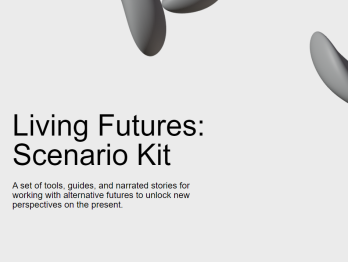How can I get started with anticipatory innovation?

Anticipatory innovation is getting more and more attention — and for good reason. However, before you jump into it yourself, think about why you’re doing it: what are you hoping to gain from it, and what do you intend to do with it. You might want to uncover new opportunities, evaluate threats for you organisation, prepare for transformative change, or stimulate radical innovation. Even if it comes down to curiosity and just wanting to try something new it helps immensely to be upfront about it with everyone involved (yourself included) — both in setting expectations and finding the right resources. If you’re interested in exploring a particular niche of the future, making it clear can help you focus your attention.
To get a taste of what anticipatory innovation has to offer consider using one of the many tested toolkits available. Using a pre-designed toolkit can be useful, as it provides tested guides and resources to help you get started on your journey.
When you feel like setting off on your own, a good place to start is horizon scanning. When you scan the horizon, you’re not only looking for larger trends but also weaker signals of change that might help unveil possible futures. Signals of change are small fragments of information that could be early examples of what might come in the future. Scanning for signals is a worthwhile practice in and of it self, but is also good first step if you’re interested in exploring possible futures (e.g. by building scenarios). Once you have collected your first signals you can start exploring possible futures, for example by imagining what the world would look like if the change indicated by various combinations of signals were to become dominating factors.
If you’re looking for a good place to start, have a look at resources such as Futuremakers toolbox or Futures Frequency by Sitra, or Living Futures Scenario kit by Danish Design Center. See AIR or OPSI Toolkit Navigator for more suggestions.







